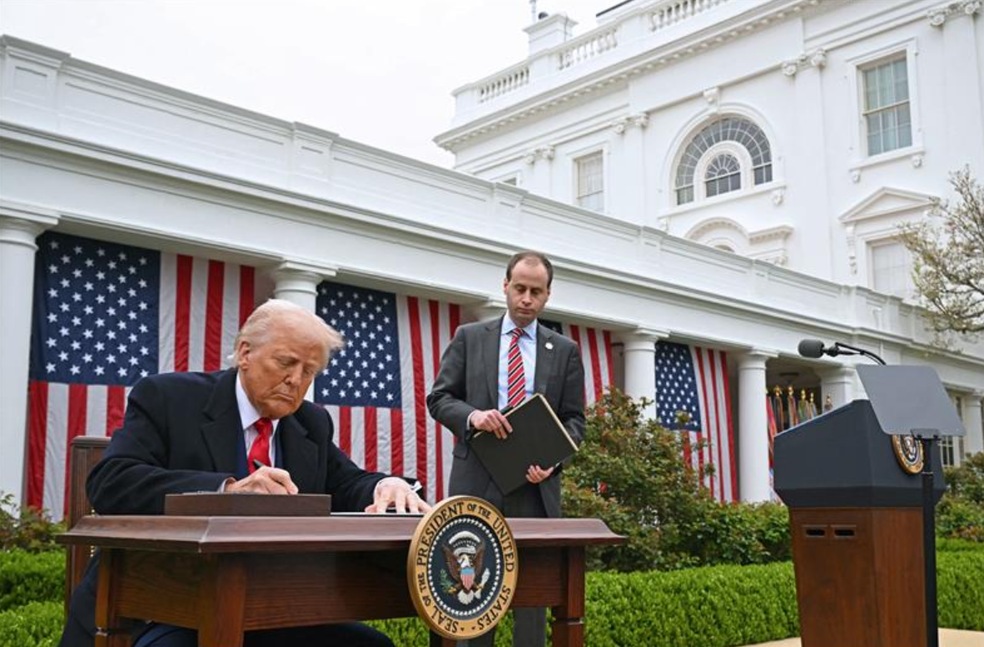The U.S. wave of tariffs begins when the clock strikes midnight on the East Coast, bringing higher costs to a number of industries. Housing experts warn of a chilling effect from builders to buyers.
President Donald Trump’s tariffs hit at midnight, according to a briefing he gave in the White House Rose Garden on Wednesday afternoon. A minimum tariff of 10% will hit a quarter of some of the country’s longest trade partners and reach as high as about 50% for select countries.
While often described as reciprocal tariffs, the administration announced the country will impose half of what the other countries have said they would levy. Vietnam’s threat of a 90% tariff on U.S. goods would then be faced with a reciprocal 46% tax on Vietnamese products.
“April 2, 2025, will forever be remembered as the day American industry was reborn,” Trump said, “the day America’s destiny was reclaimed and the day we began to make America wealthy again.”
The Trump administration called for 25% tariffs on products from Canada and Mexico in February, and another 10% duty on imports from China. The administration said they are a response to the flow of illegal drugs across the border and unauthorized immigration and reflect the president’s overall trade policy agenda.
Days later, the administration announced another tax on trade partners, dubbed “reciprocal tariffs” for those sharing the biggest trade deficits with the United States. The list includes the European Union, China, Mexico, Vietnam, Taiwan, Japan, South Korea, Canada, India, Thailand, Switzerland, Malaysia, Indonesia, Cambodia and South Africa, according to data from the Census Department.
Cambodia, which threatened to impose a 97% tariff on U.S. goods, faces the highest reciprocal rate: a 49% levy. A handful of countries said they would implement a 10% tariff and equally face the same tax, including the United Kingdom.
“The tariffs will not be a full reciprocal. I could have done that I guess, but it would have been tough for a lot of the countries who didn’t want to do that,” Trump said. “In other words, they charge us, we charge them, we charge them less, so how could anyone be upset?”
How manufacturers respond remains uncertain
A possibility exists where foreign manufacturers in these countries decide to open a factory in the United States, said Michael Neal, a senior fellow focused on housing and financial markets for the Urban Institute, a Washington, D.C.-headquartered think tank. However, those same companies could take a different route.
“It’s possible that some companies will see the economics and decide to move to the U.S. and invest there. At the same time, they can export to other countries besides the United States,” Neal said. “You think about the opportunity for a broader realignment of historical trade relationships. That’s another outcome here as well.”
Manufacturers may get creative with how they build, Neal said. As a result of higher prices, manufacturers may test new processes, such as factory-made buildings.
Home builders said they've already seen prices increase on a variety of products and services. Contractors, developers and suppliers warned of a $9,200 increase per new single-family home alone in the coming months, according to the National Association of Home Builders/Wells Fargo Housing Market Index report published last month.
Tariffs, Neal said, do "away with economic growth, at least in the short term, which raises the risk of greater job loss. That is important because those are people who otherwise would be paying their rent, paying their mortgage. The degree to which we receive housing-related materials from these countries, there is the risk that those prices will ultimately go up, but that in part will depend on at least the performance of the dollar, as well as the degree of competition in those foreign countries.”

